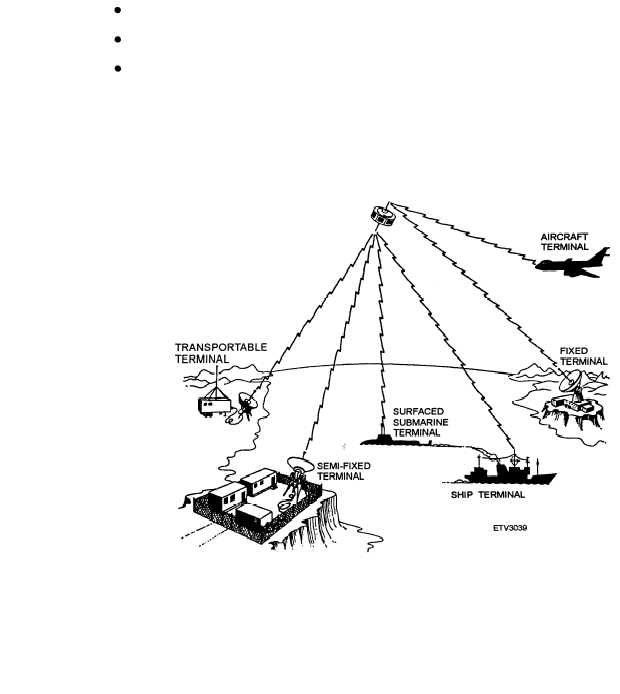CHAPTER 3
SATELLITE COMMUNICATIONS
INTRODUCTION
In the past, the Navy relied upon hf communications as its primacy method of sending messages. With the
overcrowding of the hf spectrum, the need for new and advanced long-range communications became
apparent. Satellite communications (SATCOM) systems have shown they can provide survivable, reliable,
high-capacity, secure, and cost-effective telecommunications for the military.
In this chapter, you will be introduced to satellite communications fundamentals, fleet SATCOM sub-
systems, shore terminals, current and future satellites, and some specific SATCOM equipment and racks.
SATCOM is a natural outgrowth of modern technology and the continuing demand for greater capacity and
high-quality communications. This information will be crucial to you in understanding the communications
technology of both today and the future.
After completing this chapter, you should be able to:
Recognize satellite communications fundamentals
Identify fleet SATCOM subsystems and shore terminals
Evaluate specific SATCOM equipment and racks
SATELLITE COMMUNICATIONS
FUNDAMENTALS
(A passive satellite simply reflects radio signals back
to earth.) One station transmits to the satellite on the
uplink frequency. The satellite translates the signal to
the downlink frequency, amplifies the signal, then
transmits it to the receiving terminal. Figure 3-1 shows
A typical SATCOM link uses an active satellite
that receives and retransmits, and two earth terminals.
Figure 3-1.—Satellite communications system.
3-1


